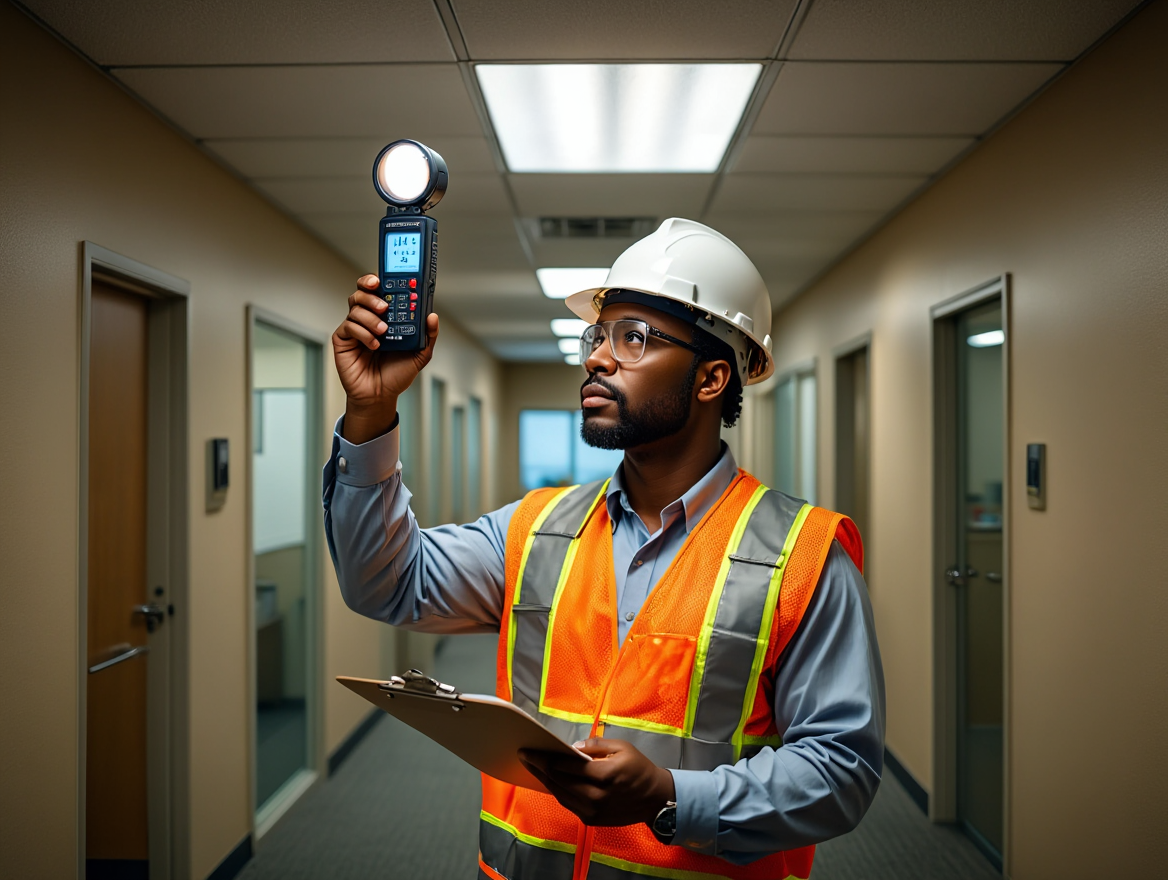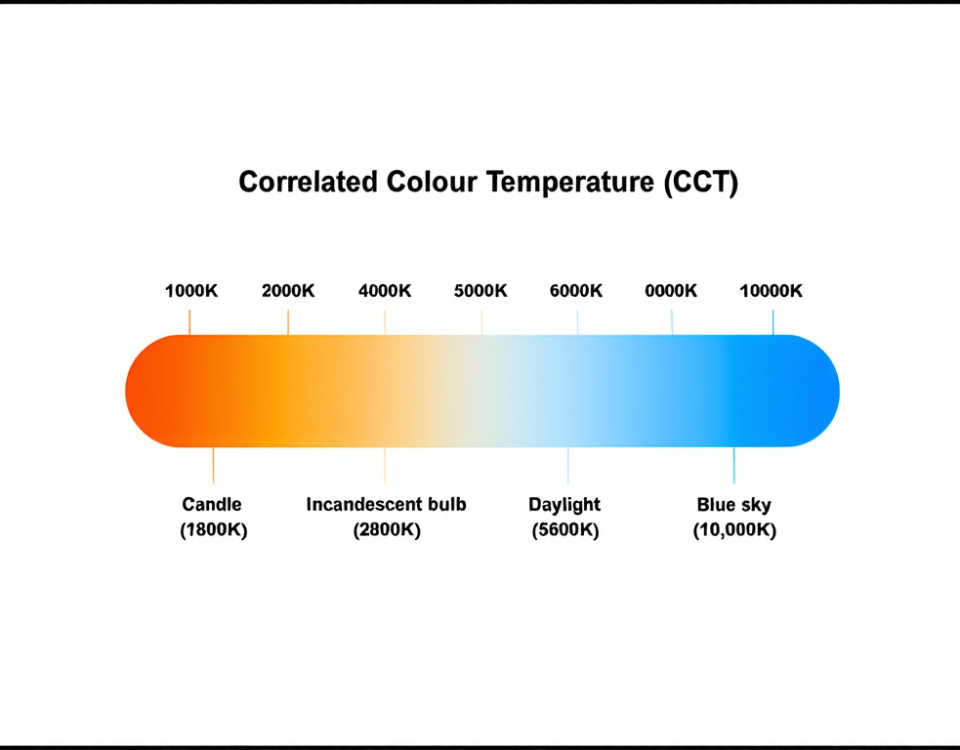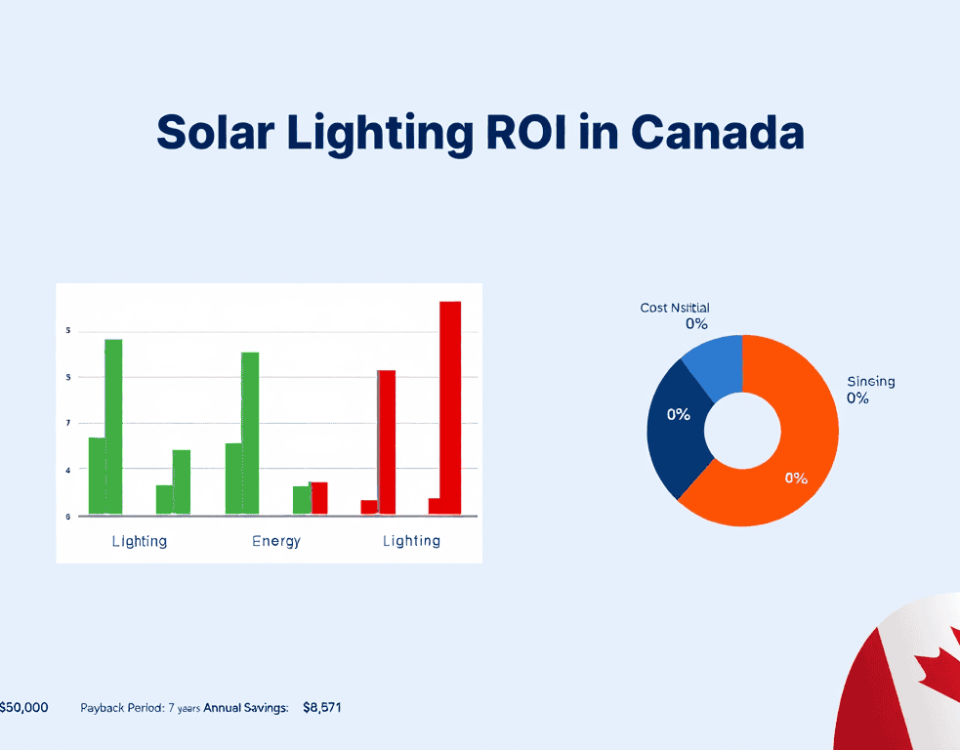How LED Lighting Fixtures Transform Factory Workspaces and Reduce Downtime

How to Conduct a Lighting Audit: A Complete Guide
October 17, 2025
Understanding Solar Lighting ROI in Canada
November 14, 2025In today’s highly competitive manufacturing environment, facility managers and maintenance teams face constant pressure. They work to reduce downtime, ensure worker safety, and cut operating costs. One of the least recognized upgrades in factory workspaces is the installation of modern industrial LED lighting fixtures. There are huge risks of hiring non-certified professionals. Hence, it is crucial to engage qualified and certified lighting experts who understand industrial standards, electrical safety, and energy efficiency requirements.
What Are Lighting Fixtures?
Lighting fixtures, commonly referred to as light fittings or luminaires, comprise the full range of electrical devices that hold, secure, and place light sources, such as bulbs, LEDs, or tubes, to produce light. Several parts make up these devices, including the housing, reflector, lens, and electrical connections. Together, they control the light’s direction, strength, and quality.
Different types of lighting fixtures are ceiling lights, wall-mounted fixtures, floodlights, and industrial high bays, each having a specific environment and application. In contemporary life, particularly in factories and business areas, energy-efficient LED lighting fixtures are the top choice thanks to their longevity, lower energy use, and low maintenance requirements.
The Case for LED Lighting in Factory Workspaces
The modern industrial-age environment puts very heavy demands on lighting: large open bays, high roofs, heavy machinery, a very complex assembly line, and shift work all combine to make requirements very taxing. Traditional lighting solutions like metal halide, high-pressure sodium, and fluorescent systems tried to fix the problem. They produced poor light quality and weak contrast while requiring frequent maintenance and limited usage. LEDs, in contrast, are fast emerging as the lighting solution for industrial places.
Curious about your potential ROI? – Get Free Audit & Analysis
1. Long Lifespan, Reduced Maintenance & Downtime
- In an industrial environment, maintenance teams often can’t service fixtures without using scaffolding or lifts. They usually have to shut down production areas before starting the work.
- A legacy lamp often fails prematurely in terms of its functionality. LEDs, by contrast, have lifespans measured usually between 50,000 and 100,000 hours and show greater durability under harsh environments.
- It leads to a lower number of fixtures failing and, in turn, fewer maintenance calls and interruptions to operations.
2. Energy Efficiency and Cost Saving
- Low energy consumption by LED lighting fixtures implies much cheaper electricity bills compared to all old technologies.
- Some sources cite up to 60% or more in energy savings for factory/warehouse retrofits.
- Lower energy consumption means not only an immediate decrease in energy costs but also a reduction in cooling loads (because LEDs emit less heat).
Key Benefits: Safety, Compliance, Insurance
- Safety: Increased lighting reduces the risk of accidents; certified installations ensure proper electrical safety standards; and longer life of LEDs means less time spent on maintenance duties at height.
- Compliance: Licensed electrical contractors are best able to adhere to local codes, pull permits, and hand over required documentation (certificates of acceptance). This will safeguard your factory from regulatory liabilities.
- Insurance: The guarantee of certification keeps your insurance in force. Should there be an electrical incident, you will stand to benefit far more from any claims rather than their being denied on grounds of non-compliance with installation standards.
If these benefits are combined, they lead to risk reduction, operation uptime increase, and ROI realization for your upgrade to LED lighting.
How to Verify Credentials (Especially if You Want to Hire Certified Electrical Contractors Toronto)
- Request Their License Number: In Ontario, the ECRA/ESA issues an ECRA/ESA license number to licensed electrical contractors. Display this number on your company vehicle, estimate, and contract, and request verification.
- Verify the License Online: The ESA (Electrical Safety Authority) “Find a Contractor” tool will help you to validate the contractor’s status.
- Request for Insurance and WSIB Coverage: An accredited electrical contractor must have liability insurance and, in the case of commercial/industrial places, WSIB (Workers’ Safety & Insurance Board) coverage.
- Demand for Written Contract and Scope of Work: The contractor must provide a comprehensive description containing: fixture types, layout, wiring changes, control systems, timeline, warranty, and maintenance expectations.
Best Practices for an LED Lighting Retrofitted Factory Workspace
One can get the most out of the factory LED lighting fixtures and reduce downtime. The following practices can be of great help when planning the project.
- Lighting Audit Should be Performed: Current lighting levels (lux), uniformity, colour temperature, lamp failures, dark spots, maintenance costs, and energy usage should all be evaluated. The data collected can be used for benchmarking purposes.
- Design for Particular Tasks: Various production areas might need different lighting levels – assembly, inspection, packaging, and forklift operation. Take into account the colour temperatures that lower fatigue, along with fixtures having a high CRI index for visual accuracy.
- Pick Out the Fixtures Made for Industrial Use: One can choose either high or low bay LED lights. They must be rated for industrial applications (dust, vibration, temperature fluctuations). Industry documents state that heavy-duty LED lights have a much longer life and better performance.
- Controls Are To Be Incorporated: Consider the use of dimming, occupancy sensors, daylight harvesting, and zone controls. These methods allow flexibility (for instance, reduced light in unoccupied zones) and further lead to a decrease in energy consumption.
- Prepare for the Least Amount of Disruption: One can schedule the installation process during off-shifts to limit production stoppage. Reputable contractors ensure minimum downtime.
- Maintenance Staff to be Trained: The LED system, controls, and monitoring should be understood by the facility’s maintenance team as soon as the system is installed. Maintenance requirements would be less but not nonexistent.
- Performance is to be monitored: The measurement of energy usage, downtime/failures, maintenance events, and worker feedback should be done post-installation.
Conclusion
A new LED lighting installation represents huge potential for a “makeover” of your factory: safer, more efficient, lower costs, and compatibility with sustainability goals. But a proper upgrade is worthwhile only if you marry it with an execution partner. Hence, when it comes to hiring certified electrical contractors for installation, it is an absolute must, especially for facilities located in Toronto.
The contractors have experience and specialized installation knowledge. They can ensure safety, compliance, insurance validity, and long-term operational reliability. Should you decide to go about the installation alone, you are opening your facility to exposure: equipment damage, downtime, non-compliance, and finally, liability in monetary terms.
Don’t risk equipment damage or non-compliance.






